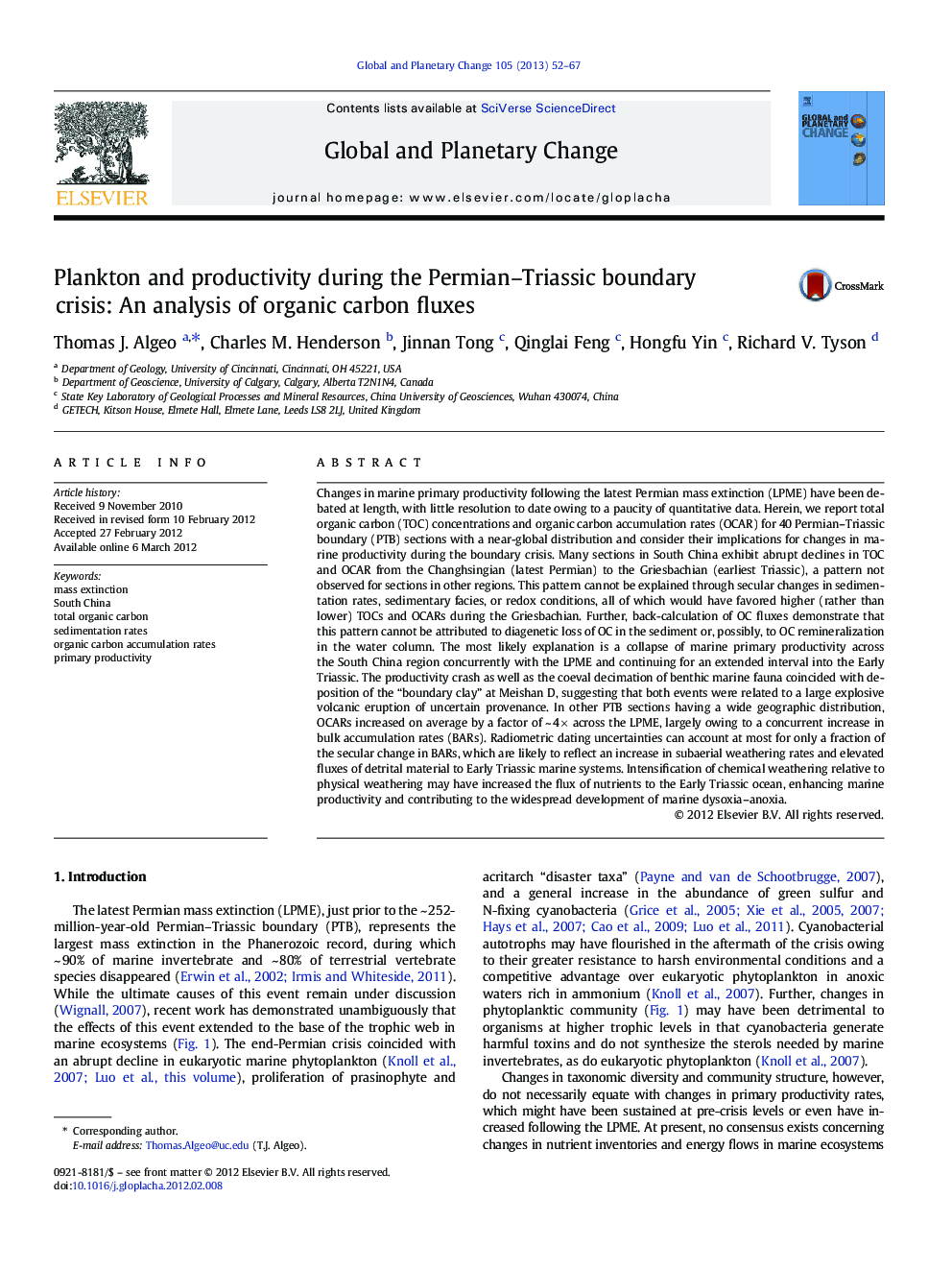| کد مقاله | کد نشریه | سال انتشار | مقاله انگلیسی | نسخه تمام متن |
|---|---|---|---|---|
| 4463602 | 1621676 | 2013 | 16 صفحه PDF | دانلود رایگان |

Changes in marine primary productivity following the latest Permian mass extinction (LPME) have been debated at length, with little resolution to date owing to a paucity of quantitative data. Herein, we report total organic carbon (TOC) concentrations and organic carbon accumulation rates (OCAR) for 40 Permian–Triassic boundary (PTB) sections with a near-global distribution and consider their implications for changes in marine productivity during the boundary crisis. Many sections in South China exhibit abrupt declines in TOC and OCAR from the Changhsingian (latest Permian) to the Griesbachian (earliest Triassic), a pattern not observed for sections in other regions. This pattern cannot be explained through secular changes in sedimentation rates, sedimentary facies, or redox conditions, all of which would have favored higher (rather than lower) TOCs and OCARs during the Griesbachian. Further, back-calculation of OC fluxes demonstrate that this pattern cannot be attributed to diagenetic loss of OC in the sediment or, possibly, to OC remineralization in the water column. The most likely explanation is a collapse of marine primary productivity across the South China region concurrently with the LPME and continuing for an extended interval into the Early Triassic. The productivity crash as well as the coeval decimation of benthic marine fauna coincided with deposition of the “boundary clay” at Meishan D, suggesting that both events were related to a large explosive volcanic eruption of uncertain provenance. In other PTB sections having a wide geographic distribution, OCARs increased on average by a factor of ~ 4 × across the LPME, largely owing to a concurrent increase in bulk accumulation rates (BARs). Radiometric dating uncertainties can account at most for only a fraction of the secular change in BARs, which are likely to reflect an increase in subaerial weathering rates and elevated fluxes of detrital material to Early Triassic marine systems. Intensification of chemical weathering relative to physical weathering may have increased the flux of nutrients to the Early Triassic ocean, enhancing marine productivity and contributing to the widespread development of marine dysoxia–anoxia.
► First comprehensive analysis of organic carbon fluxes during the Permian–Triassic boundary crisis.
► Evidence for increasing organic carbon accumulation rates (OCAR) in most regions globally.
► Evidence for an abrupt decline in OCAR in the South China region due to collapse of marine primary productivity.
► The South China marine productivity collapse was related to plinian volcanic activity.
► This study develops a new method of estimating pre-burial organic carbon fluxes in paleomarine systems.
Journal: Global and Planetary Change - Volume 105, June 2013, Pages 52–67